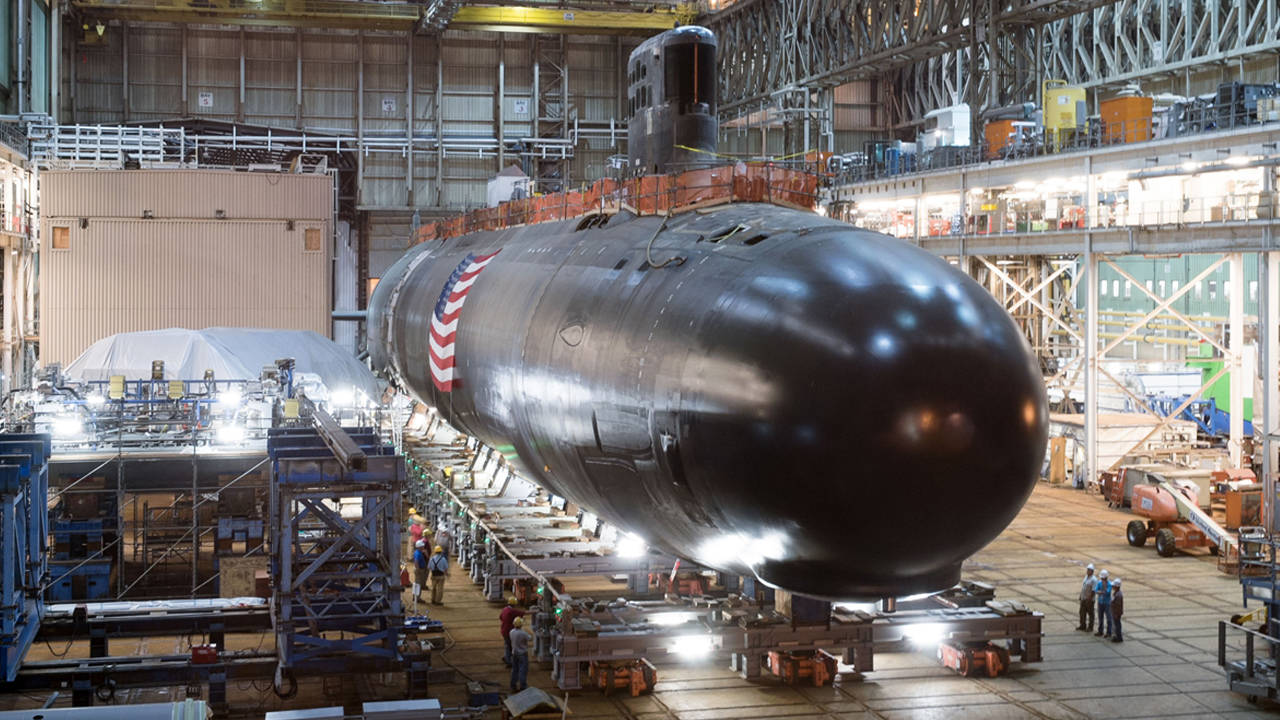
A number of commentators in Australia have lately made rash pronouncements about the demise of US submarines, alleging that innovative technologies will make the vessels vulnerable. Others have been arguing that US nuclear-powered submarines are now noisier than their Chinese counterparts and will be easily detectable by China.
The fact is that the United States has been so far ahead in submarine technology and secure underwater operations over the past 50-plus years that its submarines are virtually undetectable by either China or Russia. In the Cold War, US attack submarines (SSNs) tailed Soviet ballistic–missile firing submarines (SSBNs) at close quarters without being detected. There is every reason to believe that the same applies these days to China’s SSBNs. It is our view that China’s SSBNs are so easily tracked by US SSNs that China’s allegedly survivable second-strike nuclear capability is at high risk (as was that of the USSR in the Cold War). In brief, the quietness of US submarines and the sophistication of their operations are legendary.
The reason for this is that for more than half a century the United States has persistently poured vast amounts of research and development into superior underwater warfare technology. Naturally, these capabilities are among the United States’ most highly guarded secrets, so little information about them is in the public domain. However, we recommend two books: Blind Man’s Bluff by Sherry Sontag and Christopher Drew (1998) and The Silent Deep: The Royal Navy Submarine Service since 1945 by Peter Hennessy and James Jinks (2016). The former is about highly classified US submarine operations involving the CIA tapping into the USSR’s seabed communications in the sea of Okhotsk for the Soviet Pacific submarine fleet in Kamchatka. US submarines made repeated visits and were not detected. The Silent Deep covers close–quarter submarine operations against Soviet SSBNs and SSNs by British nuclear submarines, whose reputation is similar to US submarines’. To our knowledge, there is no equivalent book available about operations against China’s submarines yet (but the subject is touched on by Michael McDevitt’s China as a Twenty First Century Naval Power, 2020).
Those who talk about superior Chinese submarine operations being able easily to detect US submarines do not know what they are talking about. The fact is that until recently China has depended very much on Russian technology for its SSBNs and SSNs. That includes even such relatively straightforward techniques as isolating the noise of engines and other machinery from the hull. We need to remember that in the Cold War Soviet ballistic–missile firing submarines were known as boomers because their loud noises were detectable over very considerable distances. As for China dealing with US submarines, the Pentagon stated in 2023 that China ‘continues to lack a robust deep-water anti-submarine warfare capability.’
It is true, of course, that both Russia and China are making progress towards quieter submarine operations. But do we believe that the United States is sitting on its hands and making no technological advances? Of course not. The US Navy continues to invest huge amounts in ensuring that its submarines remain at the absolute forefront of hard-to-detect operations under the world’s oceans.
So, when we take delivery of our three Virginia–class SSNs from the US, we can be confident that they will be both highly effective and difficult to counter. This is why China is so angry about the prospect of our acquiring them. China already has a bad case of SLOC anxiety (worrying about its sea lines of communication). It fears loss of critical supplies, such as oil, that come through the confined waters of Southeast Asia.
Things will only get worse for China when Australian SSNs enter service and when, under AUKUS, the US operates its own SSNs out of Fremantle. Further, if our Virginias are equipped with current long-range anti-ship missiles with a range of more than 2000km, they will be formidable strike weapons able to attack deep into our region. For example, 2000km is about the distance from east of the Philippines to the Yellow Sea between South Korea and China.
Geography makes Chinese and Russian submarines relatively vulnerable when leaving base. In China’s case, the Northern Fleet is bottled up in the Yellow Sea. The sea is intensely surveilled by South Korea (which is just 400km from one Northern Fleet base, Weihai) and by Japan (which is 800km from the main base, Qingdao). Both are US allies.
Beijing’s main SSBN base is on Hainan, an island in the south of China from which submarines must move through relatively shallow waters until they reach deeper sea closer to the Philippines and Taiwan. And, to get to the deep waters of the Pacific Ocean, they must then pass through a chain of US SOSUS seabed sonar arrays that extends from South Korea and Japan to Taiwan, the Philippines and Indonesia.
The United States, by contrast, has submarine bases on its east and west coasts that provide prompt access to secure deep waters in the open Pacific and Atlantic oceans. It has no potential adversaries nearby. Similarly, submarines leaving such Australian ports as Sydney and Fremantle also have quick access to secure deep oceanic waters.
It is important to remember that keeping a capability edge in pro- submarine and anti-submarine warfare is vital for US security. This is especially true with respect to nuclear capabilities, the stability of the nuclear balance and the survivability of US SSBNs. That is why the US continues to invest heavily in such matters as submarine signature management (including radiated acoustic signatures), sensor performance and upgrades of the Mark 48 torpedo (including through joint research with Australia).
Against this background, we reject the belief of those who say that US submarines have had their day. The United States has the world’s largest and most potent nuclear-powered submarine fleet and intends to keep it that way. No wonder that China is so worried about the prospect of Australia acquiring such a vastly superior capability.

